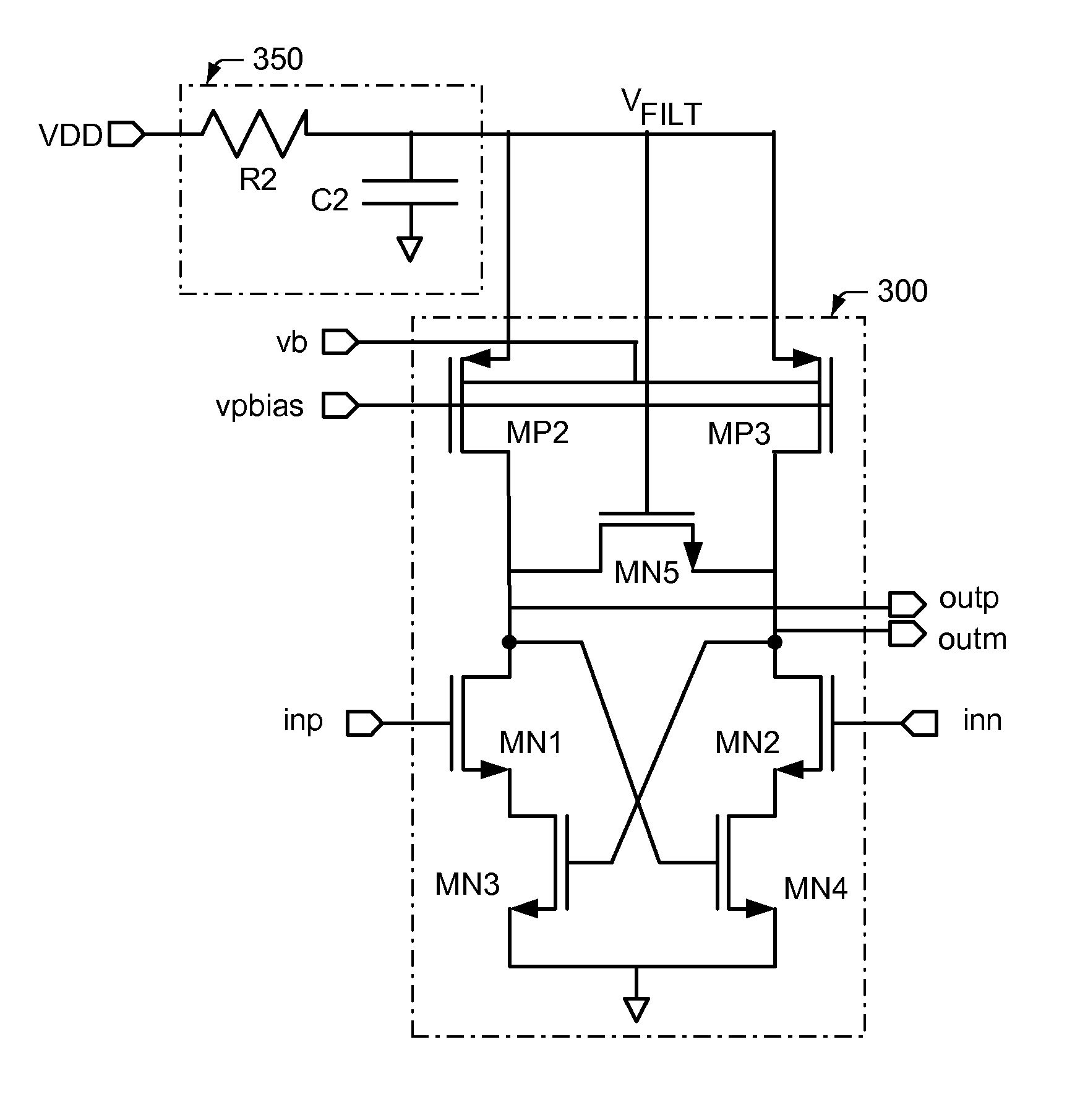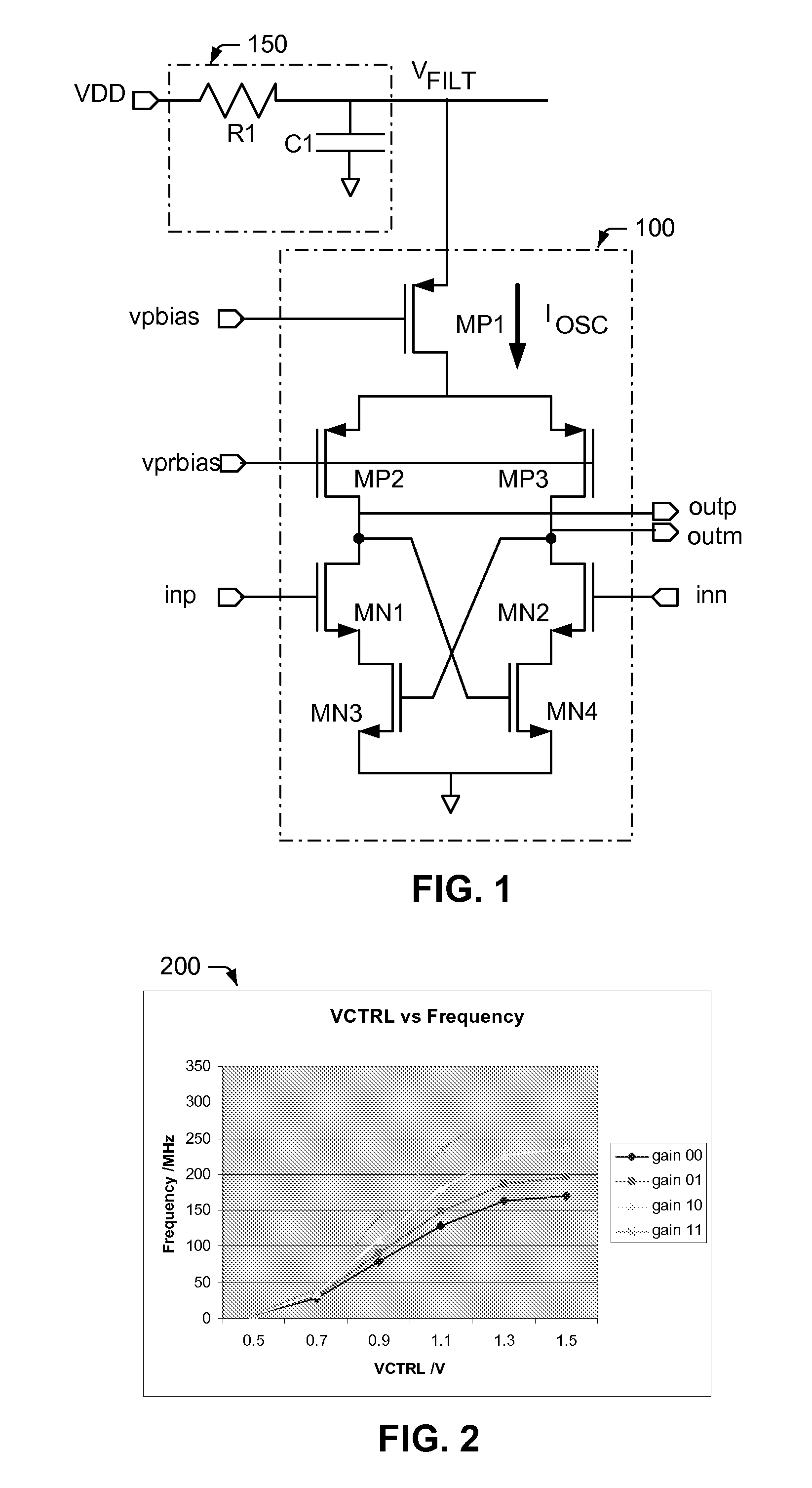Differential delay cell with low power, low jitter, and small area
a differential delay and cell technology, applied in the field of delay cells, can solve the problems of increasing the noise environment in which plls and dlls must function, reducing the stability around the operating frequency, and the design of low jitter plls and dlls has become very difficult, so as to improve the deterministic noise performance, reduce the amount of noise supplied, and reduce the power supply voltage
- Summary
- Abstract
- Description
- Claims
- Application Information
AI Technical Summary
Benefits of technology
Problems solved by technology
Method used
Image
Examples
Embodiment Construction
[0038]One embodiment of a low power differential delay cell 100 with programmable gain, frequency range and output swing is shown in FIG. 1. As illustrated, delay cell 100 includes a pair of input transistors (MN1, MN2), a pair of cross-coupled transistors (MN3, MN4), a pair of swing limiting transistors (MP2 and MP3) and a current source transistor (MP1). In some embodiments, delay cell 100 may be implemented with metal oxide semiconductor (MOS) transistors, as shown in FIG. 1. For example, the input and cross-coupled transistors may be implemented with NMOS transistors, while the current source and swing limiting transistors are implemented with PMOS transistors. However, delay cell 100 is not limited to MOS technology and may be alternatively implemented with other process technologies (e.g., bipolar).
[0039]During operation, a pair of differential input signals (inn, inp) is supplied to the gate terminals of the input transistors (MN1 and MN2). The potential difference between th...
PUM
 Login to View More
Login to View More Abstract
Description
Claims
Application Information
 Login to View More
Login to View More - R&D
- Intellectual Property
- Life Sciences
- Materials
- Tech Scout
- Unparalleled Data Quality
- Higher Quality Content
- 60% Fewer Hallucinations
Browse by: Latest US Patents, China's latest patents, Technical Efficacy Thesaurus, Application Domain, Technology Topic, Popular Technical Reports.
© 2025 PatSnap. All rights reserved.Legal|Privacy policy|Modern Slavery Act Transparency Statement|Sitemap|About US| Contact US: help@patsnap.com



